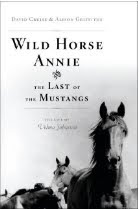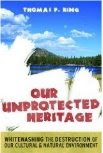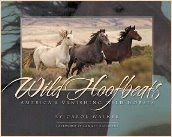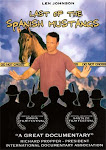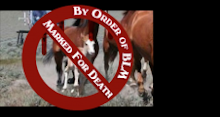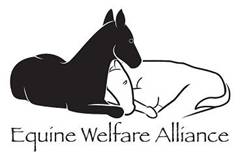 BLM Photo - 2004 Warm Springs HMA Wild Horse Round Up
BLM Photo - 2004 Warm Springs HMA Wild Horse Round UpIn January 2008, when the BLM Winnemucca Field Office approved the new grazing proposal for the Soldier Meadows Allotment, Western Watersheds Project filed an appeal and took BLM to court to challenge that decision.
As a result, extensive testimony from BLM personnel has been given about the Soldier Meadows Allotment and is now part of the public record, some of which included testimony from Glenna Eckel, BLMs Winnemucca Wild Horse & Burro Specialist on May 13th, 2009.
Ms. Eckel testified, under oath, in a court of law, about impacts from wild horses on the range in areas of the Calico Complex that she had been monitoring for the last six years. Below are some of the highlights of this testimony. To view the complete transcript, Click Here.
Page 818
Line 20, Answer from Eckel; “I’ve been assigned the Warm Springs Canyon Herd Management Area and the Calico Mountains Herd Management Area for the last six years. I have only been assigned to the Black Rock Range West for the last year.”
Page 796
Line 18, Answer from Eckel; “Well, I guess, honestly, I’m surprised that the number of horses that are out there, based on my monitoring data that I’ve done the last couple of years, that the monitoring data hasn’t shown a higher utilization than what I’ve read. So I guess what I am thinking is that I’m not sure it would change my conclusion.”
Line 24. Question; “Increasing the horses five times would not change your conclusion; is that right?”
Page 797
Line 1, Answer from Eckel; “Well, I think, again it boils down to that competition. And what I have seen, again based on the monitoring data, is that I would have expected different monitoring data than what I’ve collected, based on those numbers.”
Page 809
Line 22, Question; “Okay. I believe, in your testimony, you made a statement that you were surprised at the number of horses that were out there, that the monitoring data hasn’t shown higher utilizations than what you read?”
Page 810
Line 1, Answer from Eckel; “Correct”.
Line 2, Question; “Could you just elaborate a little bit more on what you meant by that?”
Line 4-16, Answer from Eckel; “Sure. I guess what I mean is, given the March ’08 census and the numbers we counted, I didn’t have that knowledge prior to March ’08. So the monitoring that I did and since the last gather, which was in 2004-2005, I was under the impression that we were at AML, those population estimates that we looked at earlier.”
“And what surprises me is that now, knowing that we had – I can’t remember what you gave it, a certain percentage over. But there’s significantly more animals out there than what we thought were, so I would have expected the monitoring data to show higher levels of use than what I collected. And I guess I’m learning it’s a big country, animals move”.
Page 814
Line 18-21, Question; “What were the implications, in your mind, of the monitoring data that you collected? In other words, once you gathered it, what were your – perhaps “conclusions” is a better word.”
Line 25, Answer from Eckel; “And at the time, again, like after the gather, I assumed that we were close to those population estimates of being under AML, and so the monitoring data was meeting management objectives that we had identified. And again, I was thinking we had a smaller population than I learned then in 2008.” (emphasis added).
To summarize, Glenna Eckle stated that, despite wild horse populations being five times over BLMs “established AMLs” in the areas she was monitoring in the Calico Complex, BLMs “monitoring objectives were being met”, that this significantly larger population was NOT evident in their forage consumption, that she had no idea they were so far over AML until they flew over the area and counted the horses, and that based on what she had seen, she was really surprised about what she was finding on the range regarding wild horse impacts.
To understand the full legal implication of what Glenna is saying here, it is also important to understand what the courts have already told BLM in the past about the legal criteria they must use to determine what is “excess” before they have any authority to remove wild horses and burros from the range.
“The test as to appropriate wild horse population levels is whether such levels will achieve and maintain a thriving ecological balance on the public lands. Nowhere in the law or regulations is the BLM required to maintain any specific number of animals or to maintain populations in the number of animals existing at any particular time Dahl v. Clark, supra, at 595. A determination that removal is warranted must be based on research and analysis, and on monitoring programs, which include studies of grazing utilization, trends in range conditions, actual use, and climactic factors". Michael Blake, supra: Animal Protection Institute of America 109 IBLA 112, 120 (1989); see Craig C. Downer, 111 IBLA 339 (1989)
The Calico Complex Environmental Assessments never mentioned Glenna’s testimony or what she found about “monitoring objectives being met” with five times the wild horses than BLM knew were out there before they counted them.
Instead, BLM buried the evidence and used old decisions to perpetuate the “Appropriate Management Levels” of wild horses in the area, some of which were set as far back as 1982.
So now, wild horses are galloping in the snow, down steep terrain, through rocky, icy, slippery paths on private land and being hauled to BLMs newly built Northern Nevada wild horse holding facility, not the publicly open Palomino Valley Facility, but a facility so new, BLM doesn’t even have a protocol established for public access yet.
There’s been a lot of speculation flying around the Internet the last few days about “why” the Calico Complex wild horses are being shipped to this facility instead of the publicly accessible Palomino Valley.
One source familiar with the Calico wild horses stated they were prone to strangles. This is being confirmed from another source that stated they have been communicating with BLM's John Neil, the man in charge of both the Palomino Valley Holding Facility as well as the newest one the Calico Complex wild horses are being shipped to. According to this source, John Neil stated, "Some of the horses coming in off the Calico Mountain Complex, particularly from the Warm Springs area, have contagious upper respiratory issues. As a result they are all being transported to BLM's new contract holding facility in Fallon."
According to a January 31, 2006 article in LA Weekly, Mustang author Deanne Stillman stated, “...46 wild horses at the BLM corral in Susanville, California, have died of strangles, an upper respiratory infection that can kick in after a horse is stressed — or after, for instance, being run too hard during a helicopter roundup.”
In Animal Welfare Institutes “Managing for Extinction”, a publication regarding critical issues found in BLMs management of the Wild Horse & Burro Program that continue to stay unresolved, it appears the issue of strangles is not isolated to just the Calico wild horses, as AWI has also reported:
“In the fall of 2006, the Palomino Valley, NV and Litchfield, CA holding facilities suffered from outbreaks of strangles, a highly infectious and serious respiratory disease. During the past two years, practically every BLM facility has experienced similar disease outbreaks, leading to the confirmed deaths of scores of animals…..”
While BLM points to wild horses being “prone to strangles” as the reason for their isolation and why it is important to keep them far from the public eye, (and we can only wonder why BLM would want to expose approximately 2,500 wild horses to each other that are now at risk of catching strangles from their new exposure to each other), perhaps BLM should begin to reconsider their decisions to manage wild horses by running them in the winter, in the snow, like they did to Jewel, the beautiful wild pregnant mare run down during a BLM round up in 2007.

































